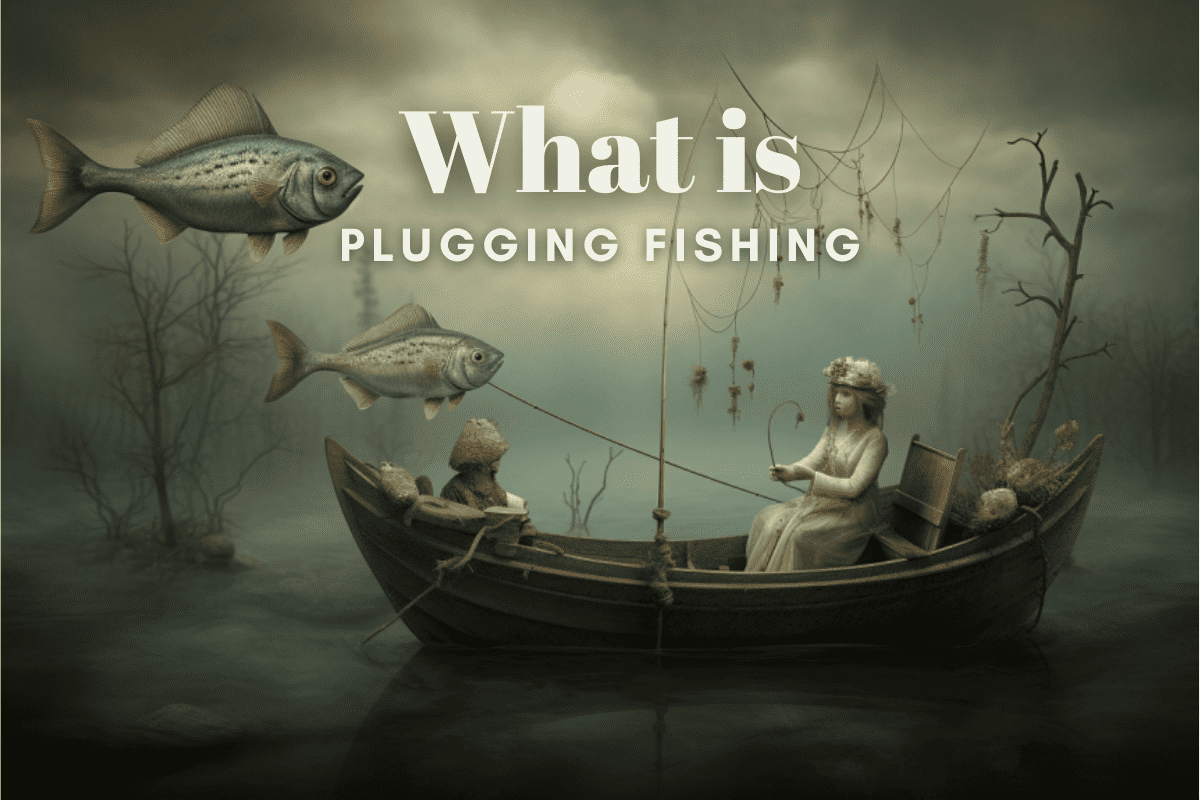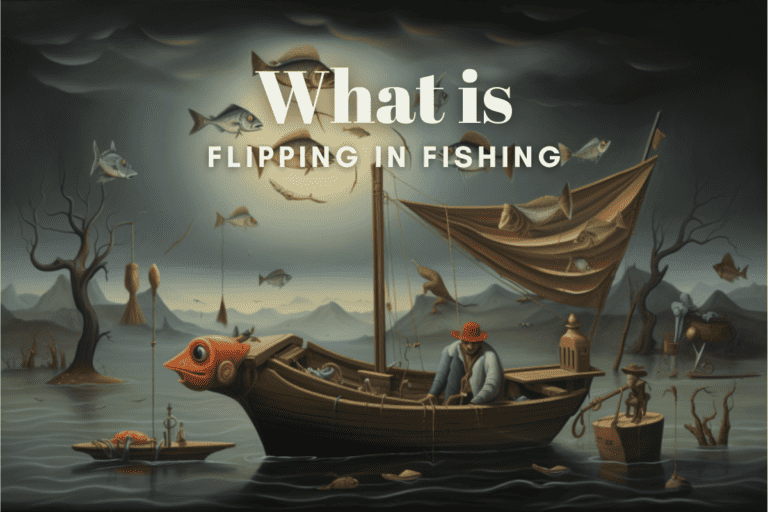What is Plugging Fishing? Secrets of This Age-Old Style

There’s a whole ocean of knowledge out there when it comes to plug fishing, and you’re about to dive in headfirst. This guide won’t just skim the surface, it’s going to take you deep into the captivating world of hand-carved lures and strategic techniques.
You’ll learn the art of using plugs, discover a variety of surface and subsurface lures, and soon, you’ll be reeling in success like a pro.
Welcome to your ultimate guide to plug fishing techniques and lures.
What is Plugging Fishing?
Plugging fishing, often simply referred to as “plugging,” is a popular angling technique that involves using a specific type of lure known as a plug. In understanding the basics of plug fishing, it’s important to know that it’s an age-old angling technique that uses hand-carved or plastic lures. Many believe that these lures are more effective when made from wood. This method is favored by many anglers for its versatility and effectiveness in both freshwater and saltwater environments. Here’s a closer look at the art of plugging:
- The Plug Lure: A plug is a hard-bodied fishing lure, typically made of wood or plastic. It’s designed to imitate baitfish or other prey, enticing predatory fish to strike. Plugs come in various shapes, sizes, and colors, each tailored for specific fishing conditions and species.
- Diving Depth: One of the unique features of plugs is their ability to dive to different depths. Some plugs are surface-oriented, creating splashes and ripples to attract fish from below. Others are designed to dive deep, reaching fish that are further down in the water column.
- Action and Movement: The design of a plug allows it to mimic the movement of live prey when retrieved. The wobbling and swimming action of a plug can be altered by the speed of retrieval, the rod’s movement, and the plug’s design.
- Types of Plugs: There are several types of plugs, including topwater plugs, diving plugs, jerkbaits, and crankbaits. Each type has its specific application, depending on the targeted fish species and the fishing environment.
- Tackle Considerations: Plugging often requires medium to heavy tackle, especially when targeting larger species. A responsive rod helps impart the desired action to the plug, while a reel with a smooth drag system ensures that hooked fish can be played effectively.
- Versatility: Plugging is effective in various environments, from freshwater lakes and rivers to coastal waters and open oceans. Whether targeting bass in a freshwater lake or chasing striped bass along the coast, plugging offers a dynamic approach to lure fishing.
In essence, plugging fishing is a captivating and skillful method that challenges anglers to understand fish behavior, lure dynamics, and water conditions. With the right plug and technique, it can be one of the most rewarding forms of recreational fishing.
Mastering the Art of Attracting Fish With Plugs
While the basic concept of plugging fishing might seem straightforward, truly mastering the technique requires a blend of knowledge, observation, and practice. Here’s a guide to honing your skills and maximizing your success with plugs:
- Understanding Plug Types: Familiarize yourself with the various plug designs and their intended purposes. For instance, topwater plugs are ideal for early morning or dusk when fish are feeding near the surface, while deep-diving plugs can reach fish holding in deeper waters.
- Tuning Your Plug: Some plugs may need slight adjustments to swim correctly. This can involve bending the eyelet or adjusting the lure’s internal weights. A well-tuned plug will have a more natural movement, making it irresistible to predatory fish.
- Varying Retrieval Techniques: The way you retrieve a plug can significantly impact its effectiveness. Experiment with different speeds, pauses, and jerking motions. Sometimes a steady retrieve works best, while other times erratic movements can trigger bites.
- Observing Water Conditions: The clarity and temperature of the water can influence which plugs to use. In murkier waters, brighter colored plugs or those that produce more vibrations can be more effective. Conversely, in clear waters, a more natural and subtle presentation might be the key.
- Matching the Hatch: Pay attention to the local baitfish and try to match your plug’s size, color, and action to the prevalent prey in the area. If fish are feeding on small silver baitfish, for example, using a similar-looking plug can increase your chances of a strike.
- Practice and Patience: Like any fishing technique, plugging requires patience. Spend time practicing your casts, understanding how each plug moves in the water, and observing fish behavior. Over time, you’ll develop an intuition for when and how to use each plug effectively.
- Continuous Learning: The world of plugging is vast, with new lures and techniques constantly emerging. Stay updated by joining fishing communities, attending workshops, or reading the latest literature on the subject.
While plugging fishing offers a dynamic and engaging way to target fish, its true mastery lies in the details. By understanding the nuances of each plug, adapting to the environment, and continuously refining your techniques, you can elevate your plugging game and experience the thrill of consistently attracting and landing impressive catches.
Diving Deep Into Different Types of Plug Fishing

The world of plug fishing is vast and varied, with each type of plug designed to cater to specific fishing scenarios and species. By delving deeper into the different types of plug fishing, anglers can equip themselves with the knowledge to tackle any fishing situation. Here’s a comprehensive look at the diverse range of plug fishing techniques:
- Topwater Plugs: These lures are designed to float and create surface disturbances. They’re ideal for targeting fish that are actively feeding near the surface. Examples include poppers, which create a splash when jerked, and walking baits that zig-zag across the water.
- Crankbaits: These are versatile plugs that dive to a predetermined depth when retrieved. Their wobbling action mimics a swimming baitfish. They come in various shapes and sizes, from shallow runners to deep divers, and are effective in both freshwater and saltwater environments.
- Jerkbaits: Designed to be jerked or twitched during retrieval, jerkbaits have a side-to-side action that can entice hesitant fish to strike. They can be floating, suspending, or sinking, allowing anglers to target different water depths.
- Minnow Plugs: Resembling small baitfish, minnow plugs have a slender body and are often used with a straight retrieve. Their natural appearance makes them a favorite for clear water conditions.
- Lipless Crankbaits: Unlike traditional crankbaits, these plugs lack a diving lip and instead rely on their body shape and internal rattles to produce vibrations. They can be fished at any depth and are often used for vertical jigging or fast retrieval.
- Trolling Plugs: Specifically designed for trolling, these plugs dive deep and maintain a consistent swimming action even at higher boat speeds. They’re popular for targeting offshore species like tuna and wahoo.
- Jointed Plugs: These lures have two or more body segments connected by hinges, allowing for a more fluid and lifelike movement. The exaggerated action can be especially effective in colder waters where fish are more lethargic.
- Soft-bodied Plugs: A hybrid between soft plastic baits and traditional hard-bodied plugs, these lures offer a more natural feel upon a fish’s bite, increasing the chances of the fish holding on longer.
- Specialty Plugs: Some plugs are designed for specific species or conditions, such as propeller-equipped plugs for aggressive predators or oversized plugs for trophy hunting.
In essence, the diverse world of plug fishing offers a treasure trove of options for anglers. By understanding the unique characteristics and applications of each type, you can tailor your approach to the conditions at hand and increase your chances of landing that dream catch. Whether you’re casting in freshwater lakes or trolling the deep blue sea, there’s a plug perfectly suited for the challenge.
Exploring the Variety of Surface and Subsurface Plugs
Exploring the variety of surface and subsurface tools can significantly enhance an angler’s experience. Each type of bait has its unique characteristics and methods of attracting fish. They’ll find surface lures like crawlers and chuggers ideal for calm waters, creating a symphony of enticing sounds. Meanwhile, globe plugs and stickbaits add a visual spectacle, mimicking prey with their bubbling and zig-zagging movements.
Subsurface plugs, on the other hand, dive into the depths. Anglers can choose from a range of diving lures, defined by the angle of their lip. Whether they’re after shallow, mid-range, or deep runners, there’s a suitable plug. Floating minnows and shad/perch plugs imitate natural prey, ensuring the angler’s part of the underwater food chain. In this community, every angler’s got a place.
Final Thoughts
With the right plug, you can turn a dull fishing day into an epic aquatic adventure. Master the art of plug fishing and you’ll be reeling in whoppers in no time!
Whether it’s a crafty crawler or a deceptive diving plug, the right lure can make all the difference. So, dive in, explore the variety, and catch the big ones.
After all, in the world of fishing, it’s all about the thrill of the catch!
Frequently Asked Questions (FAQ)
Q: What is Plugging Fishing?
A: Plugging fishing is a traditional style of fishing that involves using plug lures to catch fish. These plug lures are designed to mimic the swimming action of small fish, attracting predatory fish such as bass, pike, and striped bass. Plugging fishing has been used for many years and is still popular among fishermen today.
Q: How do I retrieve a plug lure?
A: To retrieve a plug lure, you can use different techniques depending on the type of plug and the fishing conditions. Some popular retrieval techniques include a steady retrieve, a stop-and-go retrieve, and a twitching retrieve. Experiment with different retrieval techniques to see what works best for you.
Q: What is the best type of line to use for plugging fishing?
A: The best type of line to use for plugging fishing is braided line. Braided line has a high strength-to-diameter ratio and minimal stretch, allowing for better sensitivity and a stronger hookset. It is also more resistant to abrasion, which is important when fishing around rocks or other structure.
Q: What are plug lures made of?
A: Plug lures are typically made of either plastic or wood. Plastic plugs are more durable and can withstand the teeth of predatory fish, while wood plugs often have a more realistic action in the water. The choice between plastic and wood plugs depends on personal preference and the fishing conditions.
Q: How do I tune my plugs?
A: Tuning your plugs is important to ensure they have the correct action in the water. To tune a plug, you can adjust the position of the split ring or add weight to the hooks. Tuning your plugs may require some trial and error, but it is worth it to optimize their performance.
Q: Can I use plugging fishing in saltwater?
A: Yes, plugging fishing can be used in saltwater. Saltwater plugging fishing is popular among anglers targeting species such as striped bass, bluefish, and redfish. Just make sure to use saltwater-resistant plugs and rinse them with freshwater after each use to prevent corrosion.
Q: What is the difference between topwater and subsurface plugs?
A: Topwater plugs are designed to float on the surface of the water and create a commotion, mimicking a struggling or injured baitfish. Subsurface plugs, on the other hand, sink below the water’s surface and can be retrieved at different depths. The choice between topwater and subsurface plugs depends on the fishing conditions and the behavior of the fish.
Q: What is the purpose of the treble hooks on plug lures?
A: The treble hooks on plug lures serve the purpose of increasing the chances of hooking a fish. The multiple hooks increase the surface area and provide a higher probability of a successful hookset. Make sure to handle plug lures with care to avoid getting hooked yourself.
Q: Do I need any special knots for plugging fishing?
A: While there are no specific knots that are essential for plugging fishing, it is important to use strong and reliable knots. Some popular knots for connecting plugs to the main line include the improved clinch knot and the Palomar knot. These knots provide a secure connection that can withstand the forces of casting and retrieving.
Q: What are the best plugs to use for bass fishing?
A: Bass fishing can be effectively done using a variety of plug lures. Some popular plug types for bass fishing include crankbaits, topwater poppers, and swimbaits. The choice of plug depends on the fishing conditions, the behavior of the fish, and personal preference. It is always a good idea to have a selection of plugs in different sizes and colors to increase your chances of success.





